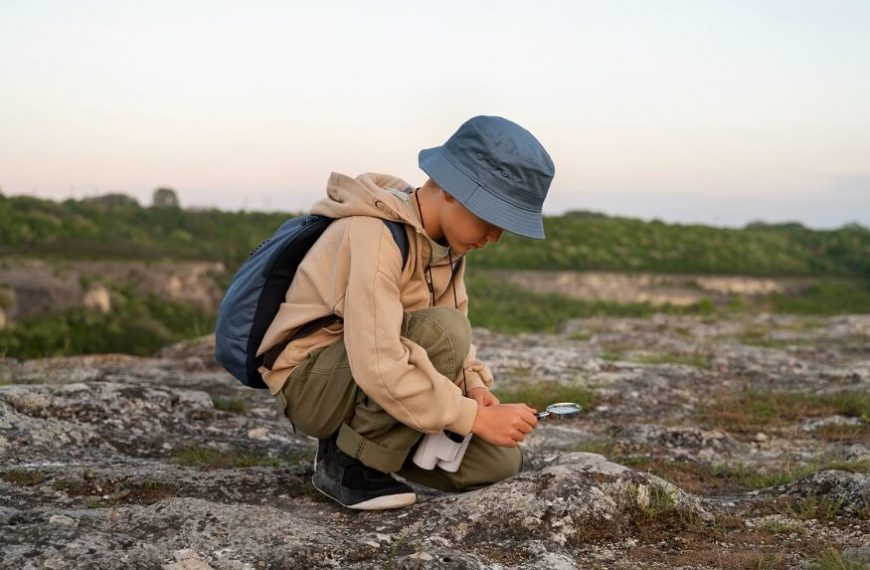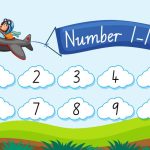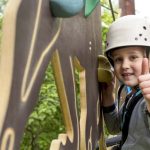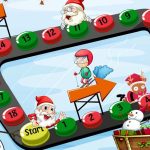To a child, a rock can be the most fascinating object on Earth. Simply holding it to the light and examining its texture, makes for an enthralling experience.
If you’re looking to make Science fun for kids, getting them to explore Rocks and Minerals would be a good place to begin. In this article, you will find information for all those budding Geologists, ranging from the Types of Rocks and Minerals, to cool Activities to explore Rocks and Minerals.
Before we begin, it is only prudent to take a closer look at what are Rocks and Minerals.
Rocks and Minerals: The Basics
Let’s begin, with an understanding of what minerals are.
Minerals
A Mineral can be defined as an inorganic solid that occurs naturally. Having a distinct chemical composition and crystalline form, it is made up of a single atom or molecule.
Note: The Earth contains mineral components that either exist alone, or in a multitude of combinations known as compounds.
Examples: Fossil fuels like Coal and Petroleum.
Rocks
A rock is a dense, inorganic solid that, like minerals, is formed naturally. It is composed of two or more mineral grains. Each rock is unique in size, shape and texture. Further, all rocks fall into one of three categories: Igneous, Sedimentary and Metamorphic.
Examples: Sand, pebbles, shells.
Rocks and Minerals: Key Differences
One of the most commonly asked questions is, ‘What are the differences between Rocks and Minerals?’ Even though they seem to be alike, they are vastly different.
Here’s a look at the key differences between Rocks and Minerals.
- A rock has no chemical makeup or atomic structure. As mentioned earlier, a mineral has a unique crystalline structure and chemical composition.
- Unlike minerals, rocks do not have any physical or chemical properties.
- Rocks are not edible, while some minerals, like salt, are used in cooking.
- Rocks are irregular in shape, and come in a wide variety of colours. On the other hand, minerals have specific shapes and colours.
10 Exciting Activities to Explore Rocks and Minerals
By now we have gained a fine understanding of what the differences between rocks and minerals are.
It’s time to ‘Rock On’, with some wonderful activities that will deeply inculcate the love of Rocks and Minerals in the hearts of children.
Rock and Mineral Hunt
There’s no better way to get children interested in rocks and minerals, than having them hunt for them!
To do: Have your child explore areas around your neighbourhood, collecting all kinds of rocks and minerals. When home, they can record any interesting observations they have about each of them on a sheet of paper.
Experimenting with Chemical Reactions
Seeing how rocks and minerals react to chemicals is a fun idea!
To do: Have your child take a rock or mineral, and add a small amount of vinegar to it. Here are a couple of ways you can observe some cool chemical reactions.
- Soak the rocks in vinegar for several days, making a daily log of the changes observed.
- Simply pour vinegar into a cup, add a rock, and see any bubbling that ensues.
Note: If you don’t have vinegar, you could use lemon juice.
Exploring through Reading
This one’s for all those budding Geologists!
To do: Get some books with high-quality images of rocks and minerals. Here are some recommendations of some really great books that will teach your kids all things rocks and minerals.
- Everything Rocks and Minerals (National Geographic Kids) by Steve Tomecek
- My Book of Rocks and Minerals by Devin Dennie
- Rocks and Minerals (National Geographic Kids) by Kathleen Zoehfeld
Getting Up Close and Personal
There’s a reason they say ‘God is in the Details!’ This wonderful activity is sure to make for a Rocking Experience for Kids.
To do: If there’s ever a time you want to bring out that magnifying glass, it is Now! Get your children to probe all the fine details that make up rocks, and note them in a journal. Moreover, get them to notice key characteristics of the rocks being examined, like the following.
- Luster. This refers to how the surface of the rock reflects light.
- Cleavage. The way the rock splits along its natural planes.
- Hardness. How easy or difficult it is to scratch the rock’s surface.
Mineral Identification Quiz
All children love to be quizzed. Why not test their knowledge of minerals, with a cool quiz?
To do: All you need to do is gather some pictures of minerals along with some interesting tidbits of information, from some online resources or magazine. Then, you can show your child pictures and ask questions like ‘What property does this Mineral possess?’
Tip: You want them to be well-prepared, so they get at least some of the answers right.
Starting a Rock Collection
All kids love to collect things. Be it shells, stamps, coins or – Rocks!
To do: Over the course of time, have your child collect rocks from places ranging from your backyard, to any nature hikes you might take. Have them make a note of where they found each one. These rocks can be displayed in a box or even on a shelf.
Creating Rock Art
That beloved Playdough can be put to some really good use, like in this fun activity!
To do: Give your children some Playdough, and have them create sculptures that are inspired by their favourite rock or mineral!
Testing Heat Conductivity
Science Experiments are the best! Like this one, that shows how some rocks are better conductors than others.
To do: Filling a container with ice water, place a rock in it. You want to record the temperature of the water, before and after adding the rock. Then do the same using a pot of hot water. Use different rocks to see which rocks conduct heat better.
At EuroKids, we believe that learning about rocks and minerals is extremely important for children of all ages. Learning more about them will surely help them gain a deeper appreciation of the world they live in.
















